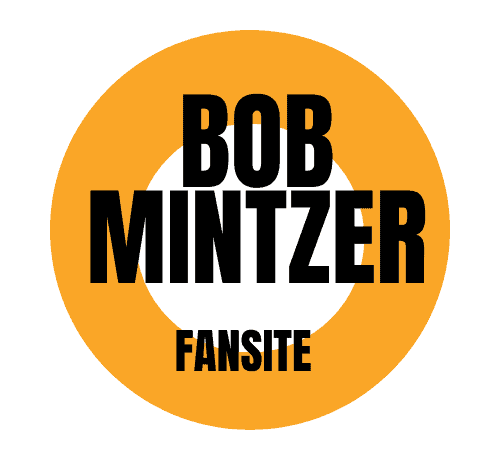George Coleman and Wayne Shorter are two of my favorite saxophonists. They both played in the most important bands of Miles Davis, have strong personalities, are dynamic composers/improvisors., and made/make huge advances to further jazz music. Their approaches are somewhat different, yet they both take the music to a higher level every time they play. I propose here to talk a little about these two saxophone virtuoso’s similarities and differences, and how the change from Coleman to Shorter in Miles’ band seemed to follow the music of the time period, both in terms of what Miles was doing and what the current trends in jazz were.
George Coleman, in my humble esteem, is one of the most lyrical and articulate improvisors on the tenor saxophone (also alto saxophone). He manages to find beautiful melodies that are extremely “singable” and reflect the harmony in a cleverly colorful way. To me he has always had the right combination of the blues, modernism, a vast and colorful palate, and a serious sense of swing and phrasing. Just listen to Miles Davis’ Four and More or Live in Europe and you can hear what I’m talking about. Joey DeFrancesco once told me he listens to Four and More every day. I can see why. The band plays amazingly, and it may be the best Coleman I’ve ever heard.
Wayne Shorter is an equally dynamic tenor saxophonist, and a prolific composer. His work as a solo artist, with Art Blakey’s Messengers, and with Miles Davis are nothing short of amazing. His current working band takes improvised music to new heights. Wayne’s compositions are in a class all to themselves. His saxophone playing might be considered somewhat more abstract than George Coleman’s. Wayne can create a parallel reality to the diatonic harmony of a tune in such a special way. He is the master of suspense, waiting until the very last moment to play something on the saxophone, seemingly at the exact right moment.
George Coleman takes a Rembrandt approach to improvisation, where a somewhat literal yet spontaneous and fresh interpretation of the tune is utilized. George works the harmony in a very thorough way, squeezing lots of color and interesting possibilities out of the harmonic structure.
Wayne Shorter (to me) takes more of the Salvador Dali approach, where the focus is less on elaborating on the harmonic structure and more about creating another structure over the form which relates in a more abstract way to the traditional structure of the piece. He will spin an abstract tale that you really have to think about for a while. Wayne speaks this way when you talk to him in person. You have to look beyond the literal towards the abstract to follow along at times.
George Coleman assumes a Mozartian approach to blowing, where every phrase is eloquently conceived and totally attached to the music. Wayne goes the Edgar Varese route, where swaths of sound and color seem to override phrases with specific pitches and conventional melodic shape.
The story was that some of the guys in Mile’s band were feeling that George Coleman was too much the traditionalist, and was playing licks on the bandstand (or practicing on the bandstand). I never heard it that way. The story was that Tony Williams wanted Sam Rivers in the band. They know each other from Boston.
On a recording session I did a few years ago with Ron Carter, I had the opportunity to ask Ron about this situation, and if band members had any impact on Wayne Shorter replacing George Coleman in Miles’ band. Ron said “Miles made the decision to bring in Wayne, no other band member”.
In August of this year I had occasion to play at the Hollywood Bowl with Herbie Hancock and an orchestra conducted/arranged by Vince Mendoza. I spoke to Herbie at length about the same subject. Herbie’s take on it was that Miles had been waiting for Wayne to finish up with Art Blakey’s band, and had intended to hire him as soon as he became available. When asked about stylistic considerations, Herbie said that Wayne was playing in a more abstract fashion that seemed to fit the direction of the music Miles’ band was going in. This band wasn’t the only one.
I contend that the trend in jazz in the mid/late 60s was one of abstractionism. Many musicians were taking the music as far out as they could, perhaps as a continuation of what John Coltrane was doing towards the end of his career, as well as the influence of the free jazz movement pioneered by Ornette Coleman, Archie Shepp, Cecil Taylor, and others. Young people and artists around that time were bucking all things conventional and many facets of life were being questioned and re evaluated.
Miles picked up on this, I believe, and superimposed an abstract and almost free jazz approach to grooves of that time period, where harmony and melody became very fluid and secondary to rhythm. We used to call this “time-no changes” Wayne Shorter seemed like the right player for this shift in direction.
Bob Moses once told me a story about his experience subbing in the Keith Jarrett quartet around that time. Keith called Stella by Starlight, counted it off, and proceeded to play totally out of time, no key center, and no melody remotely resembling “Stella”.
So, where are we with all this? We’re talking about two great artists who took very different roads. One was not better than the other, just different. They both contributed greatly to the sound and direction of the Miles Davis Quintet of the mid sixties. In a way, it’s silly to compare these two giants. It’s far more important to recognize the merits of each musician we encounter, and see what their particular approach was. See how they thought and responded to the music at hand.
It is said that it is better to identify rather than compare. I agree!
